In my last post Vegan Candida Diet I explained the reasons behind the decision to take on the Candida journey. I also wrote about my first experiences as well as difficulties. In this post however, I want to concentrate on compiling balanced vegan candida diet meal plans.
Should you be new to yeast infection topic or need more information, feel free to check out my Guide to Candida Overgrowth: Causes, Symptoms, Testing and Treatment.
For FULL GUIDE Download my FREE EBOOK on Candida Overgrowth!
Watch what I have to say about my vegan Candida meal plans:
Struggles With the New Way of Eating
Most importantly, I was determined to stay on whole food plant-based diet during my fight with candida overgrowth, i.e. I would not consume any oils as well as refined sugars or flours, which are to be avoided in any case while on candida diet.
As you most probably know, the energy that you consume is divided between fats, carbohydrates and protein. Therefore, every day you get a percentage of calories from each group. Normally I’d try to keep the relation as follows:
- 65% or more calories from carbohydrates
- 20% or less calories from fat
- 15% or less calories from protein.
While I was eating everything including fruits and starchy vegetables the above was very easily achieved. However, here’s what I saw when I started to insert my vegan Candida diet meal plans into nutritional database – it was very difficult to get the same level of energy while keeping to those percentages. The reason was not that I wasn’t capable of eating non-starchy vegetables in an amount that’d keep the percentages where I’d been used to.

Mycozil is a unique, all-natural formula designed specifically to support the body’s natural balance of yeast and fungal organisms. It’s made with potent herbs and enzymes that work with your body’s internal defenses to protect against the spread of harmful organisms.
Disclosure: this post contains affiliate links. As a Global Healing affiliate I earn from qualifying purchases. For every purchase made from the links in this post, you’ll be able to support my work. So you can look after your health, and contribute to my mission at the same time. Thank you!
Simply put, my nuts’, seeds’ and protein rich foods’ intake relatively increased, consequently raising the percentage of calories from fat as well as protein. Most of all, the rise came on the expense of carbohydrates.
At the same time I noticed one thing – I actually didn’t need as many calories as I was consuming before. Even with 1500-1700 kcal per day (sometimes 1400 during the cleanse) all my nutritional needs were met and most of all, I felt lighter, more awake and alert.
Macros and Micros on Vegan Candida Diet
Inserting my vegan candida meals into a database was a crucial step as otherwise I might have lacked on some of the nutrients and/or energy in general. It is most noteworthy that with the vegan Candida diet meal plans that I have established I am getting all the necessary macros and micros. Furthermore, I’m beyond the RDA with most vitamins and minerals.
P.S. You can have both Candida Cleanse and Reintroduction Plans here.
Macronutrients of my vegan Candida diet meal plans divide as follows (approximately):
- Carbohydrates – 210 grams, 56%
- Fats – 42 grams, 25%
- Protein – 71 grams, 19%
The fats are divided as follows (percentage from calories):
- Monounsaturated fats (olives, hazelnuts, almonds, avocados) – 9.2%
- Polyunsaturated fats (sunflower seeds, sesame seeds, walnuts, flax seeds, chia seeds, pumpkin seeds, hemp seeds) – 10%
- Saturated fats (coconut, Brazil nuts) – 7.2%
Ratio of omega 6’s and omega 3’s
It is especially relevant to remember that within polyunsaturated fats there are omega 6’s and omega 3’s and their healthy ratio is 1:1 – 4:1, i.e. you shouldn’t get omega 6’s more than 4 times of the amount of omega 3’s.
Here’s the ratio of omega 3 to omega 6 of some foods:
- Flaxseeds – 4:1
- Chia seeds – 3:1
- Hemp seeds – 1:3
- Walnuts – 1:16
- Grape leaves – 6:1
Next, the following cocktails have a good ratio of omega 3 to omega 6:
- Omega 3/6 ratio 1:3 – 1 tbsp of flax seeds, 1 tbsp of hemp seeds, 1 Brazil nut, 1 tbsp of sunflower seeds, 3 tsps of sesame seeds
- Omega 3/6 ratio 1:3 – 1 tbsp chia seeds, ¾ avocado, ½ tsp tahini, 3 green olives, 2 Brazil nuts
- Omega 3/6 ratio 1:4 – 1 tbsp flax seeds, 1 Brazil nut, 1 tsp poppy seeds, 3 tsps sesame seeds, 1 tbsp sunflower seeds, 2 walnuts
Supplements in Vegan Candida Diet Meal Plans
- Vitamin C – to support my immune system during candida cleanse I took the time release formulation vitamin C; 1000 mg/day.
- Vitamin B12 – there are two different forms of B12: methylcobalamin and cyanocobalamin. Cyanocobalamin is synthetic and created in a laboratory, whereas methylcobalamin is a natural form of B12 and therefore probably better absorbed by our bodies. It has not been proven, but I choose to use my logic.
- As nutritional yeast contains the synthetic form I do not rely on that entirely and therefore I take the natural form supplement once a week as well.
- Vitamin D – I take vitamin D3 (cholecalciferol) in liquid form, especially in winter when there’s not a lot of sunlight. Remember, the UV (ultraviolet) index has to be at least three in order to get vitamin D from sunlight.
- Agar-agar – it actually is food and not supplement. However, as I only add it to my food to meet the daily iodine allowance, you might as well call it supplementing. ¼ tsp. of agar-agar a day is enough to keep your iodine levels up to date. I add it to my porridge or chia pudding. Alternatively 1g of dried wakame does the job as well.
- Apple cider vinegar – during Candida cleanse I started my day with a tablespoon of organic apple cider vinegar in a glass of warm water. I began with 1 teaspoon and gradually worked my way up to a tablespoon. Apple cider vinegar helps the liver to detoxify your body and is also told to enhance mineral absorption when consumed before meals.
Feeling too overwhelmed? Check out my tailored meals plans!
Download my FREE EBOOK on Candida Overgrowth!
Examples of Balanced Vegan Candida Diet Meal Plans
Breakfast
I usually make porridges for breakfast. My favourites are:
- Oat bran-buckwheat carrot cake porridge (discard the carrot in the first stage of your Candida diet)
- Oat bran-buckwheat pancakes
- Oat bran porridge
- Oat bran-quinoa porridge
- Oat bran-millet porridge
- Oat bran-amaranth porridge
Another tasty breakfast is Buckwheat bread with some tahini or avocado, cucumber, tomatoes and oven-baked veggies.
In addition, I have some fats and spices:
- Healthy fats – sunflower seed butter, almonds and/or shredded coconut.
- Spices – turmeric, cinnamon, cloves, ginger, vanilla, and/or spirulina.
My post 5 Ways to Prepare Nutritious Porridge describes different preparation methods, including using soaked grains instead of flakes or groats. Should you want to go even deeper into porridge world, read 9-Step Guide to Preparing Balanced Porridge.
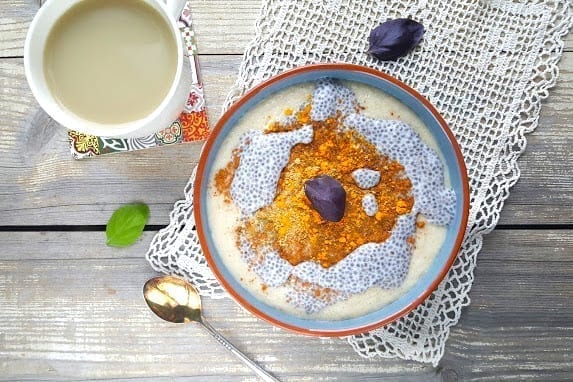
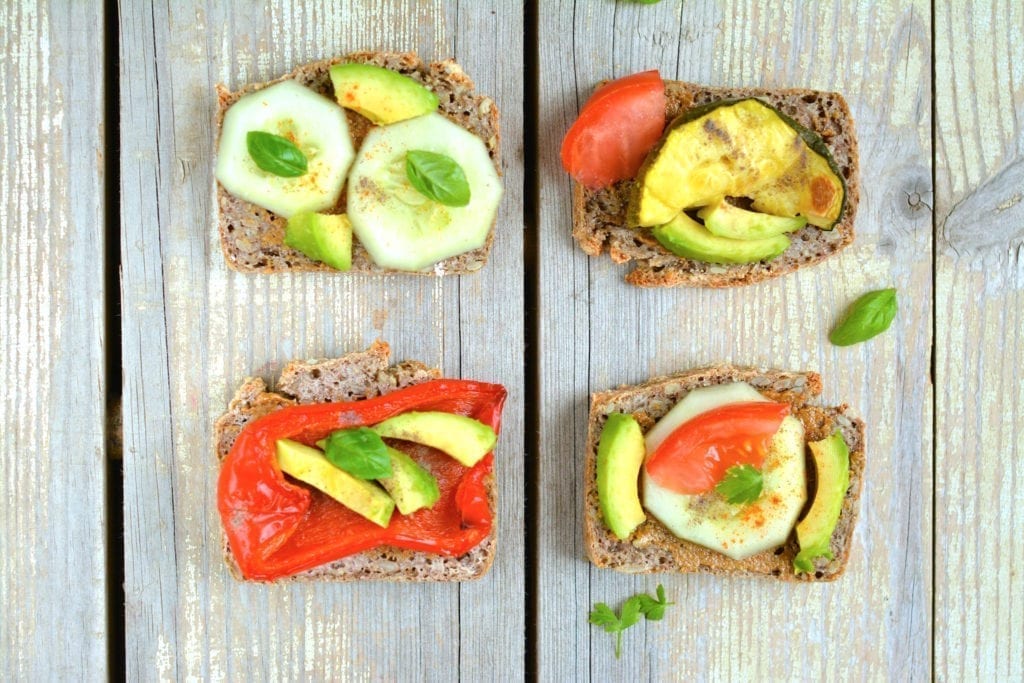
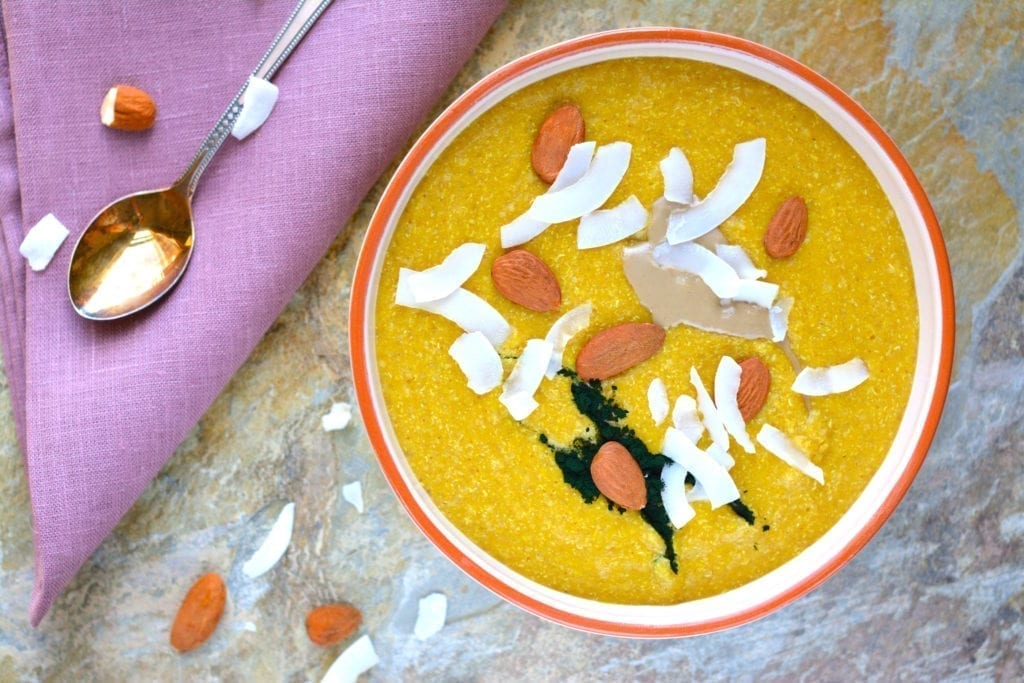
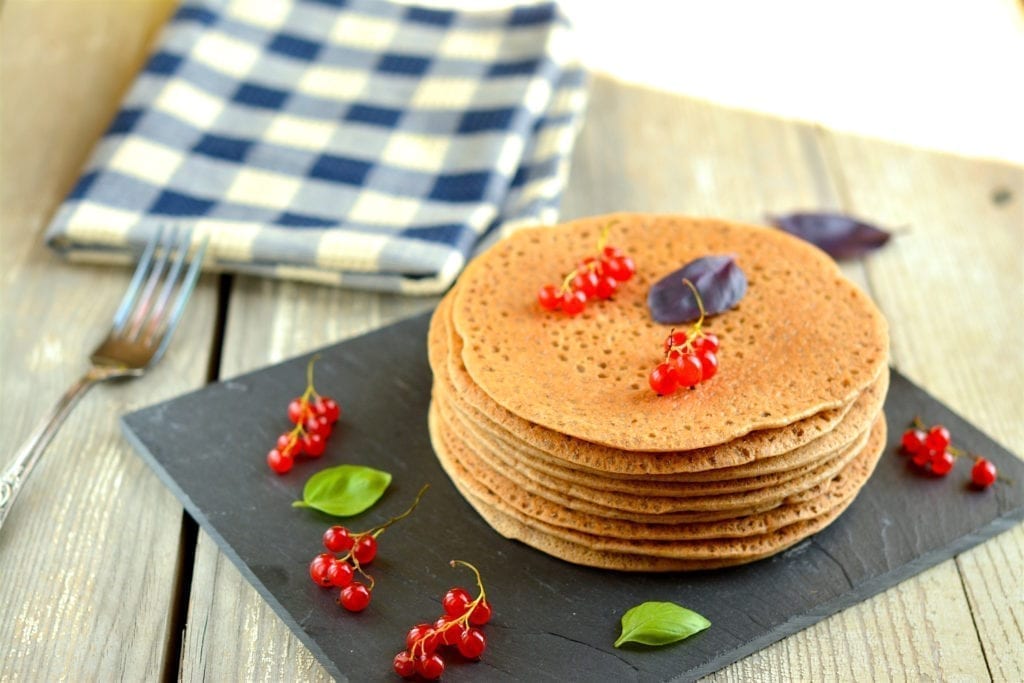
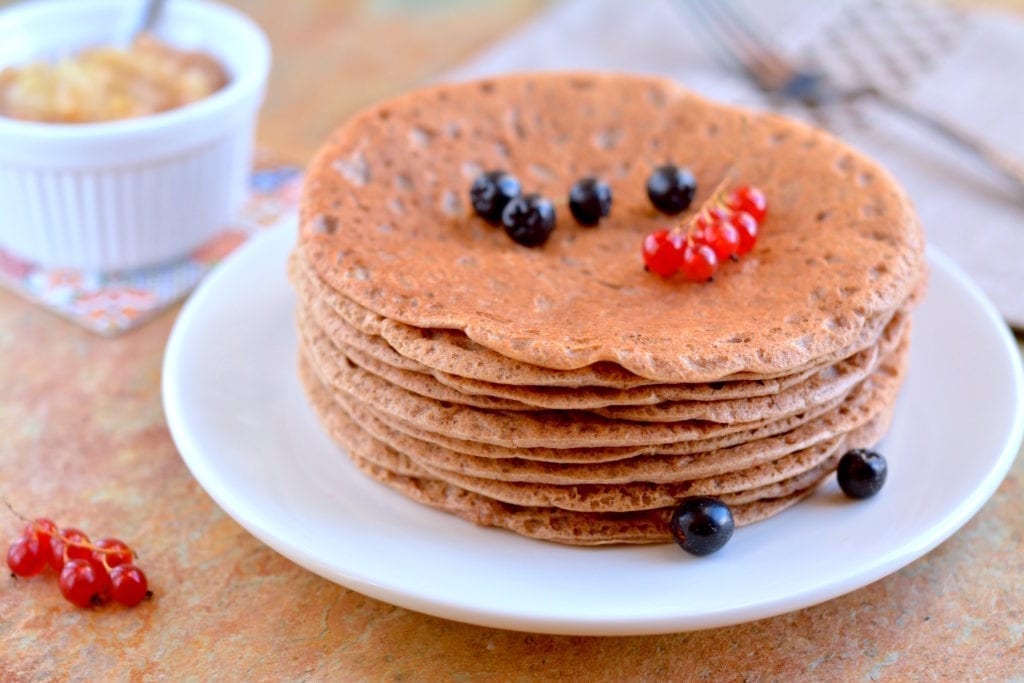
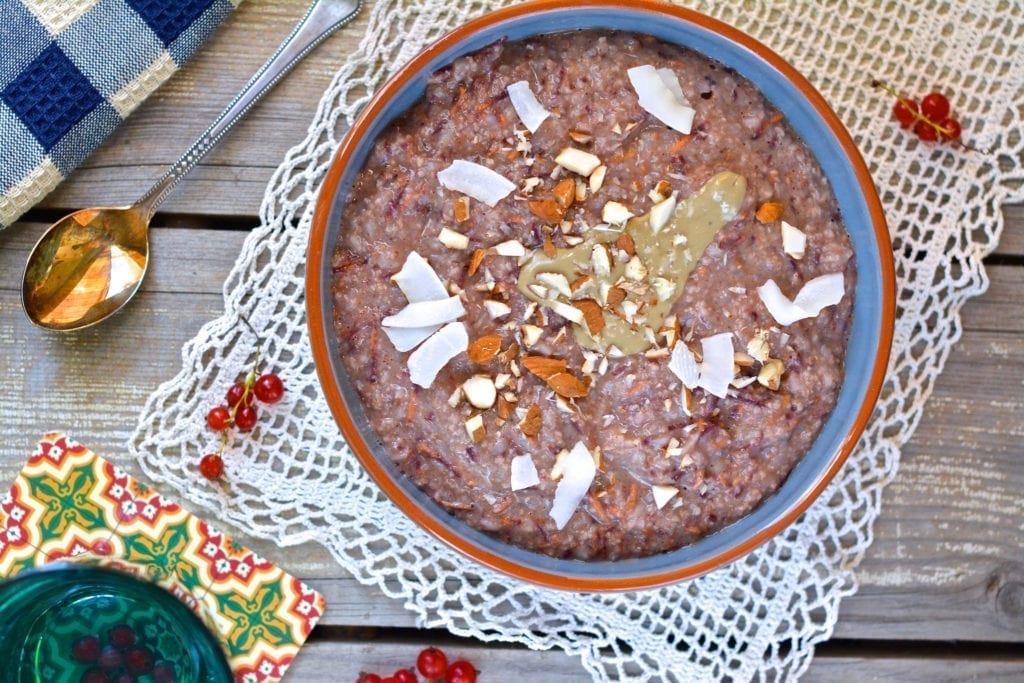
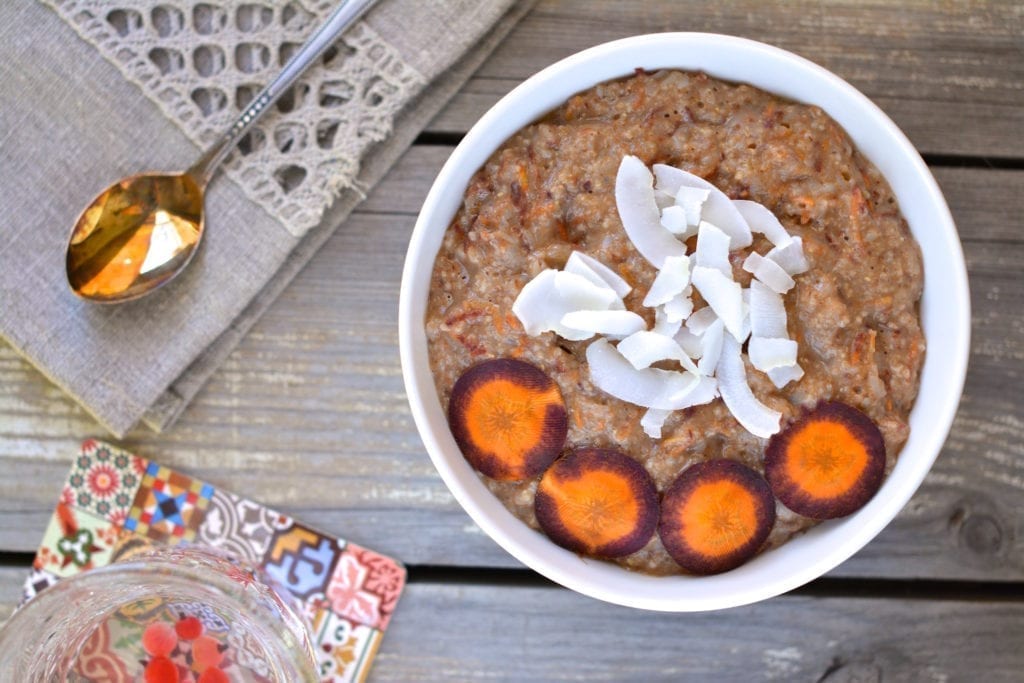
Lunches and Dinners
I usually combine myself a Buddha bowl (a huge salad bowl):
- Protein – millet, quinoa, buckwheat, or tofu, fermented buckwheat bread.
- Healthy fats – avocado and/or tahini-lemon juice-nutritional yeast dressing.
- Leafy greens – lettuce + kale, pak choi, beet greens or Swiss chard.
- Non-starchy vegetables – cabbage, broccoli, cauliflower, turnips, rutabaga, eggplant, summer squash, tomatoes, red bell pepper, Brussels sprouts, green beans, leek, onions, sauerkraut.
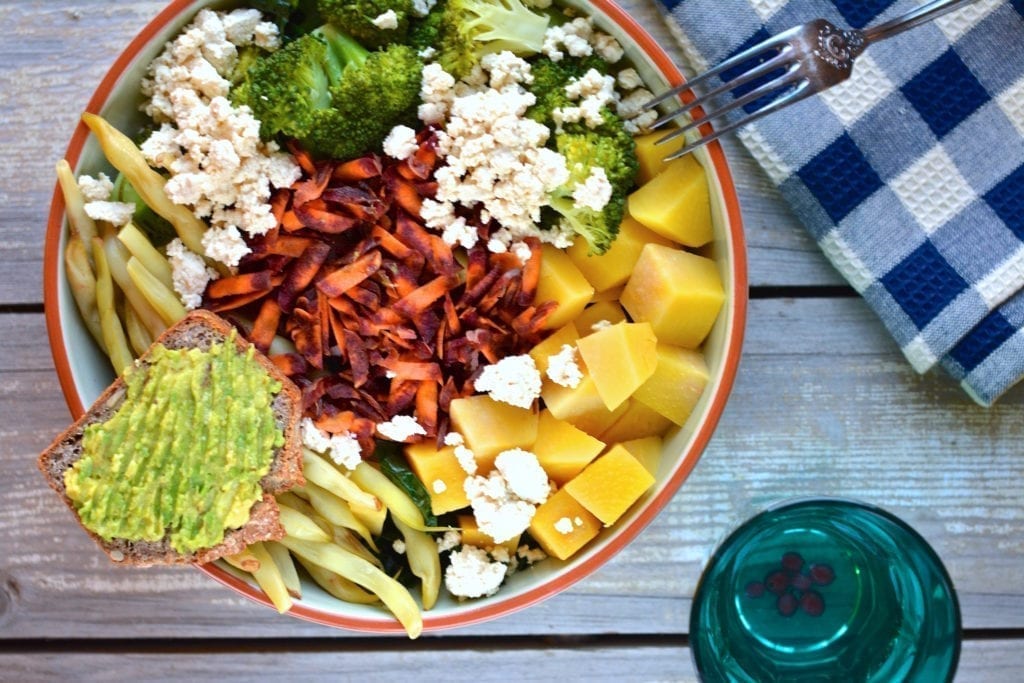
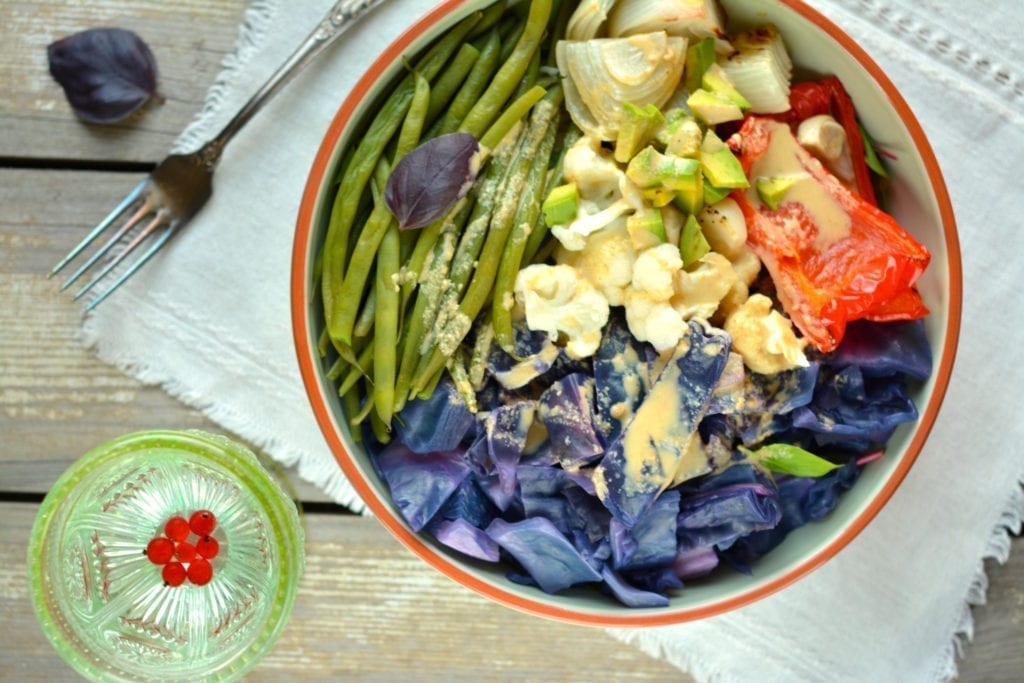
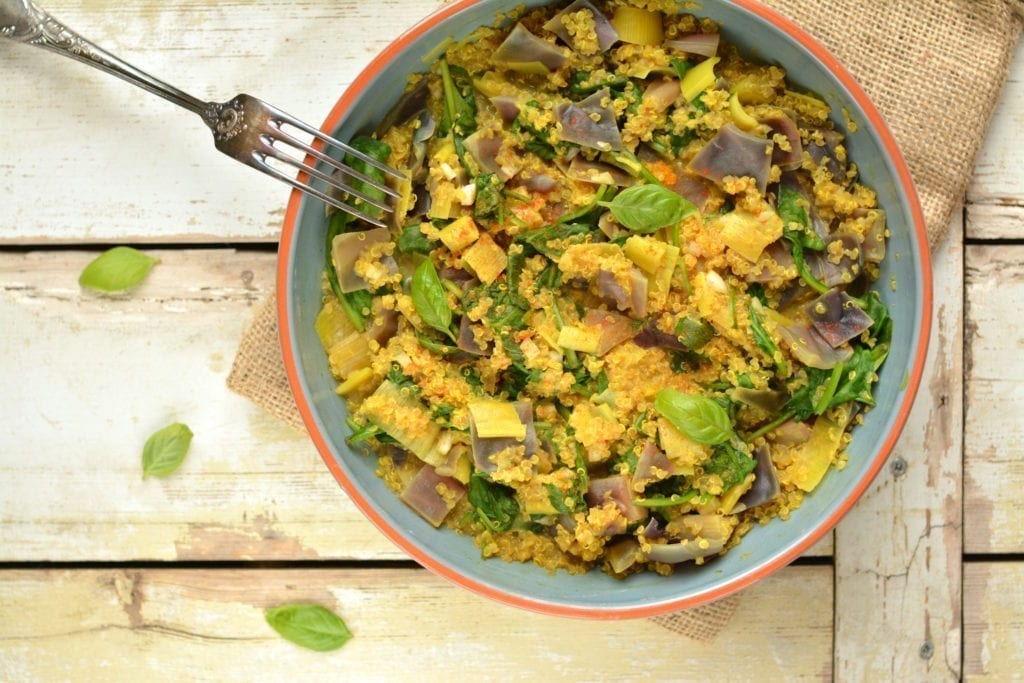
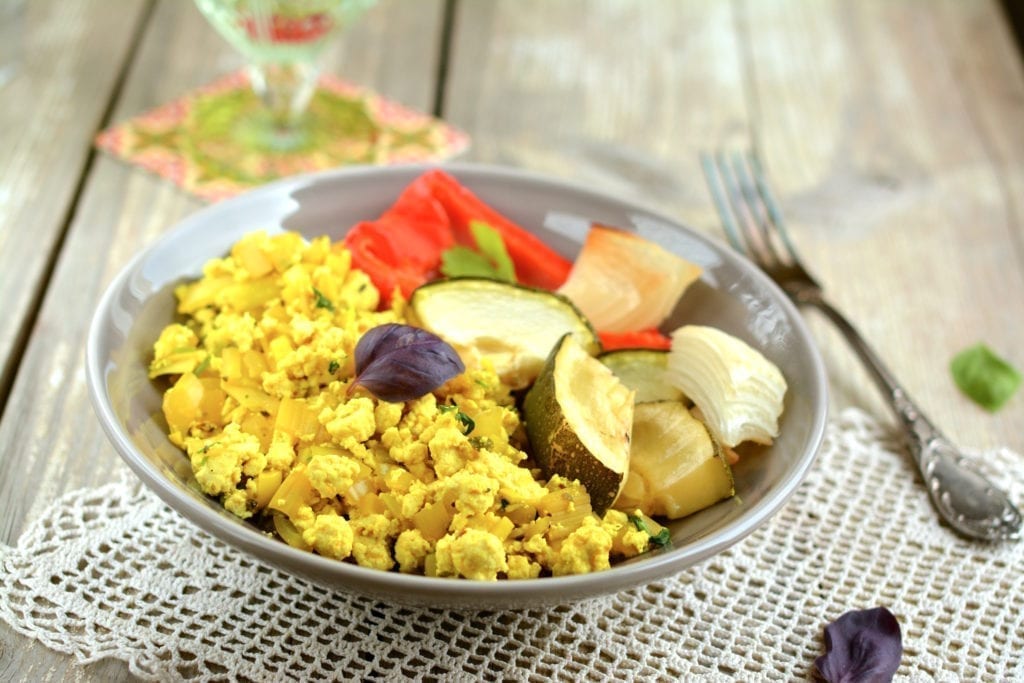
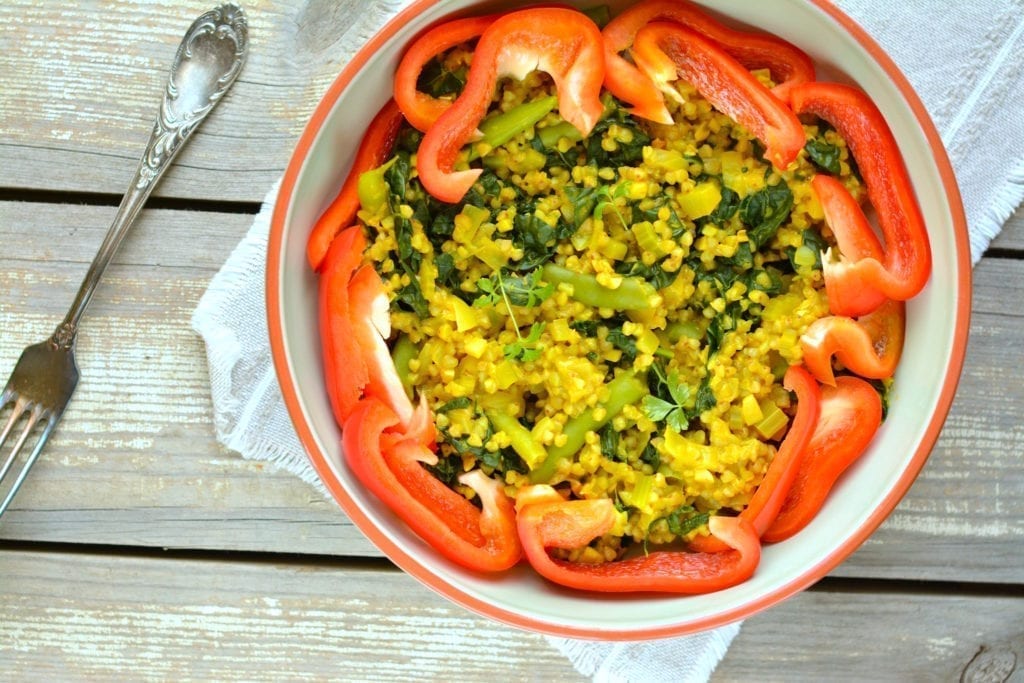
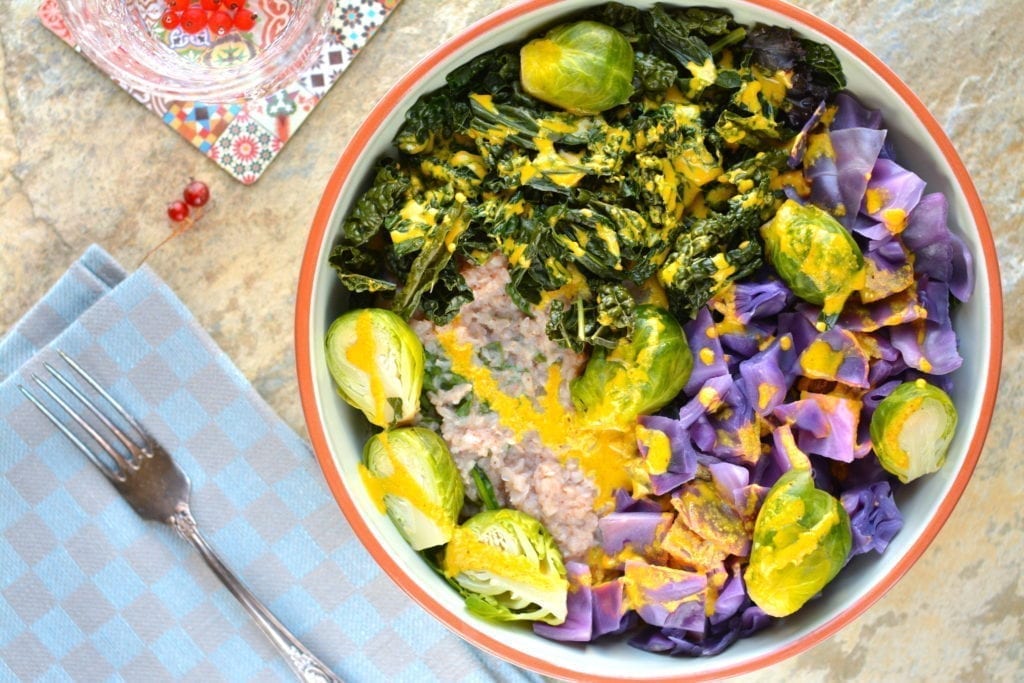
Snacks
It is actually quite easy with snacks and they don’t differ much from my regular pre-Candida diet options:
- Buckwheat bread slices.
- Buckwheat crackers with avocado, tomato, cucumber and salt/pepper. Or just plain crackers.
- Raw cauliflower, red bell pepper, tomatoes, cucumber, turnip.
- Muffins and cookies.
- Veggie and bean/lentil spreads.
Desserts
My favourites are chocolaty chia pudding and spiced pumpkin chia pudding.
Another option is to prepare delicious candies by combining nut butter, oat bran, some salt and xylitol. You might also like protein balls, homemade chocolate candies. Feel free to substitute cocoa with carob while on cleanse diet.
Drinks
- Chicory root coffee with unsweetened non-GMO soymilk which has become my morning routine instead of coffee or matcha latte. Even though it may taste awful when you first have it, you need to give chicory a chance – I threw away most of my first cup, but now I’ve grown to like it. It’s important not to prepare it too strong in the beginning, which was the mistake I made.
- Peppermint tea – I make it with fresh leaves and drink as it is. Another option is a strong tea prepared with dried leaves and with a bit of soymilk.
- Camomile tea – good if I want to relax myself or my stomach.
- Ginger tea – I cut thin ginger slices and boil them in water for 10-15 minutes. This is my before-going-to-bed routine.
- Plain water or sometime also mineral water.
- Golden milk – turmeric-cinnamon milk prepared with almond or soy milk and sweetened with stevia or xylitol.
The Essentials of Vegan Candida Diet Meal Plans
When compiling vegan Candida diet meal plans, remember:
- Have a variety of foods every day – different grains/legumes, vegetables, nuts and seeds.
- Eat a rainbow daily – something green, something yellow, something orange, something purple, something red and something white/brown.
- If you had a grain-based breakfast, have vegetables with some nuts for your mid-morning snack.
- Should you want to have a grain-based dessert (muffins, cookies), have fewer grains with your dinner or ditch them altogether.
- Make sure to have a tablespoon of ground flax seeds or chia seeds a day so your body gets enough omega 3s.
- Always have some nuts or seeds with vegetables and fruits rich in carotenoids (carrots, sweet potatoes, dark leafy greens like spinach and kale, romaine lettuce, squash, cantaloupe melon, red bell pepper, apricots, peas, broccoli, tomatoes) as the fats help absorb vitamins.
- Don’t get more than 25% of your calories from fat.
- Bear in mind glycemic load of foods.
- Eat the majority of non-starchy veggies raw.
The Plate Rule for lunches and dinners:
- ½ grains, avocado, nuts/seeds, tofu/tempeh,
- ½ raw and cooked non-starchy vegetables.
Glycemic Load
Bear the glycemic load of foods in mind when compiling vegan Candida diet meal plans. Read more on the importance of glycemic load from my post Living Candida-Free After the Cleanse.
Even though most foods with high GL are excluded from Candida diet, you still need to be cautious with the remaining grains in your menu, i.e. millet, quinoa, buckwheat, amaranth and oat bran. The best choice from the list is oat bran having the lowest GL: 16 points per 100 grams of raw oat bran, whereas millet has 44 points, amaranth 39 points, raw buckwheat 37 points and quinoa 36 points for the same amount.
Therefore, should you have problems with blood sugar fluctuation like I do, you’d need to be extra careful with glycemic load and the points of your meals.
I myself have tackled the GL puzzle and compiled vegan Candida diet meal plans that wouldn’t exceed 100 points per day or 20 points per meal. I decided to take “scientific” approach because my blood sugar still tended to fluctuate, especially in the morning after I’d had my (obviously too big) porridge.
More Resources on Vegan Candida Diet
Should you feel that compiling balanced vegan Candida diet meal plans meeting all your nutritional needs is too overwhelming, check out my Vegan Candida Meal Plans.
Furthermore, you’re welcome to read more about my experiences and research results from the following articles:
My Experience and Results After 11 Months on Vegan Candida Diet
Vegan Candida Diet – Staying Candida Free After The Cleanse
Download my FREE EBOOK on Candida Overgrowth!
Most of all, keep yourself up to date with my posts by subscribing to my newsletter or following me on Facebook and Instagram where I also share my meals almost daily. I’d love to see you in my community!
Editor’s note:This article was revised on Aug 31, 2018.
Disclaimer: this information is based on my own research and personal experience and is not intended to be a substitute for professional medical advice. Users should seek their own professional counsel for any medical condition or before starting or altering any exercise or diet plan. It is your responsibility to know your health and nutritional needs.
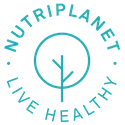
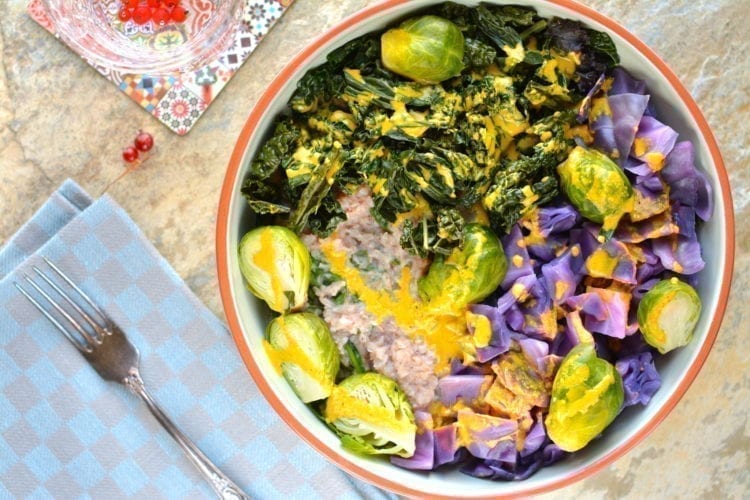











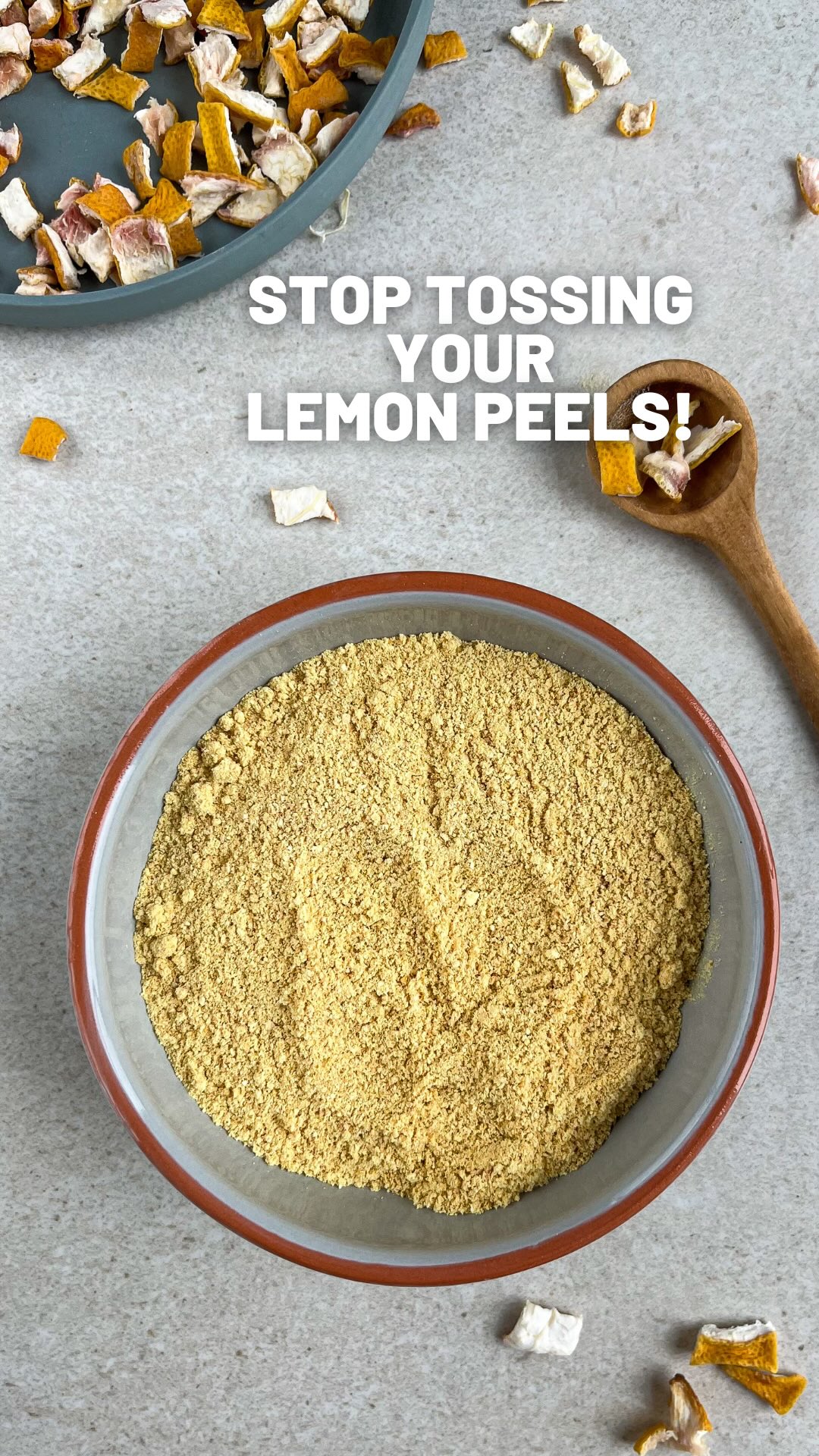
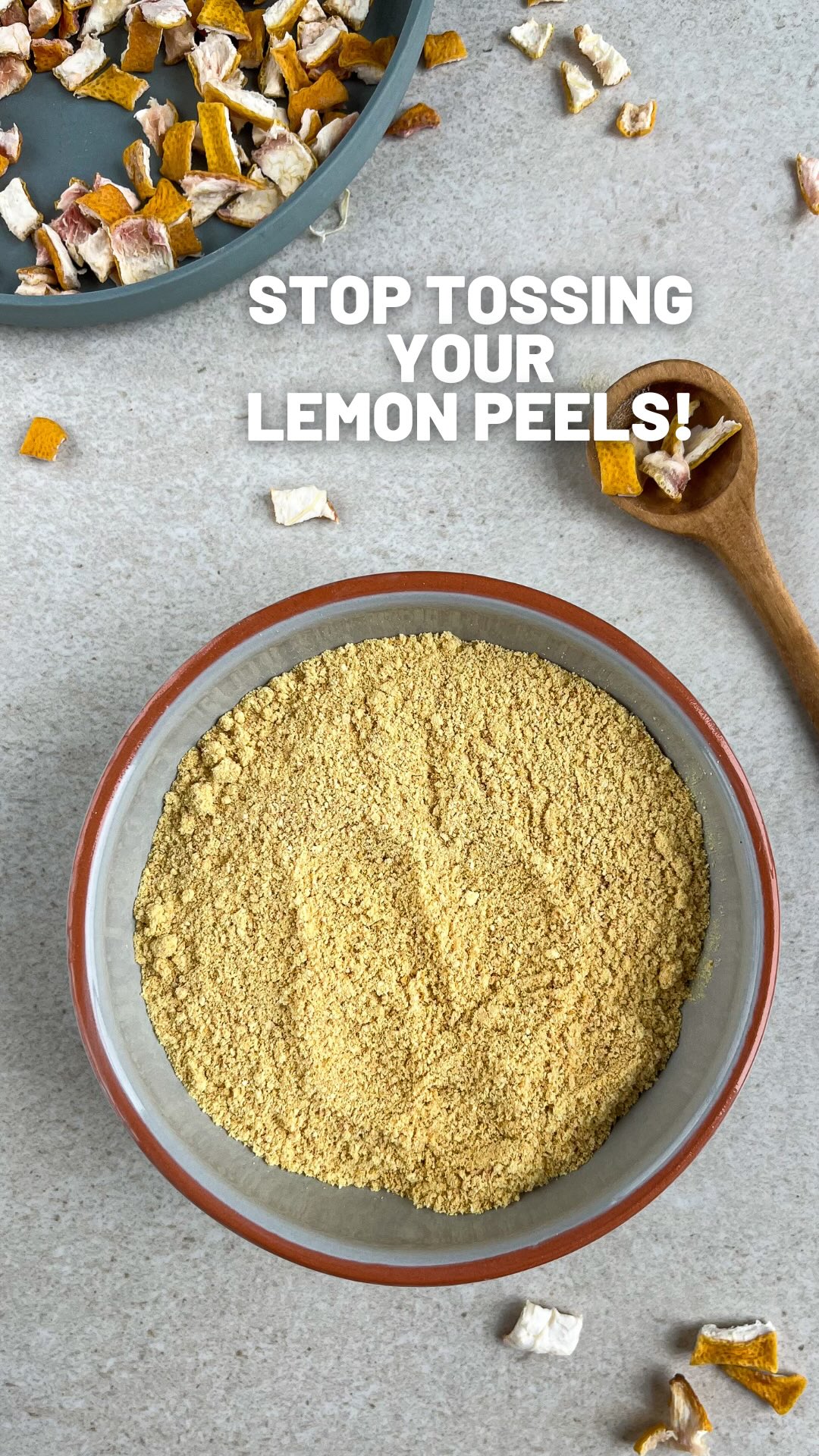

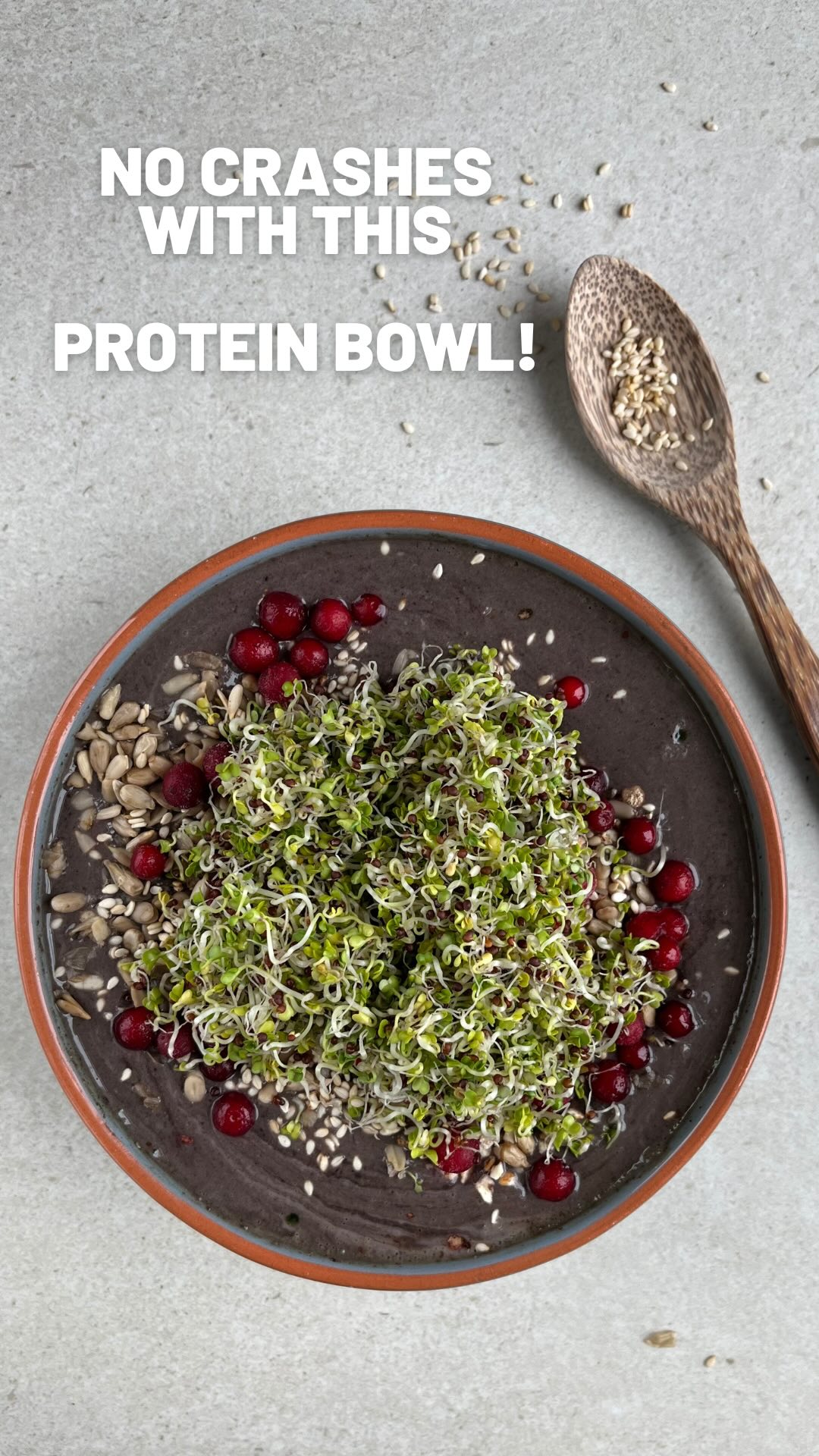











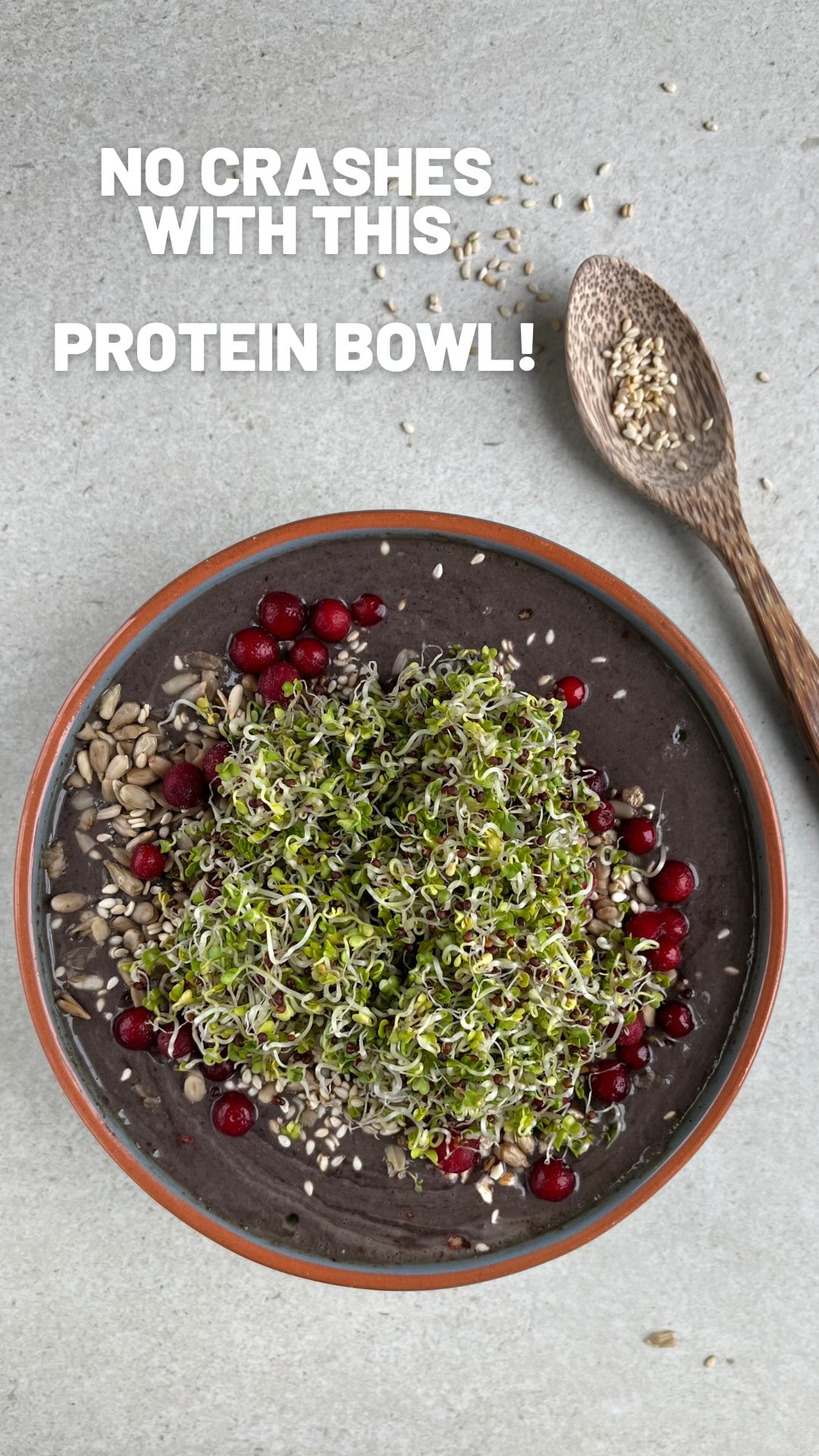




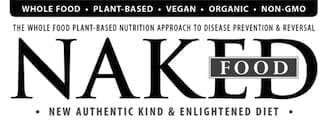


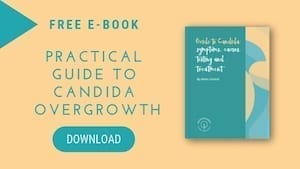

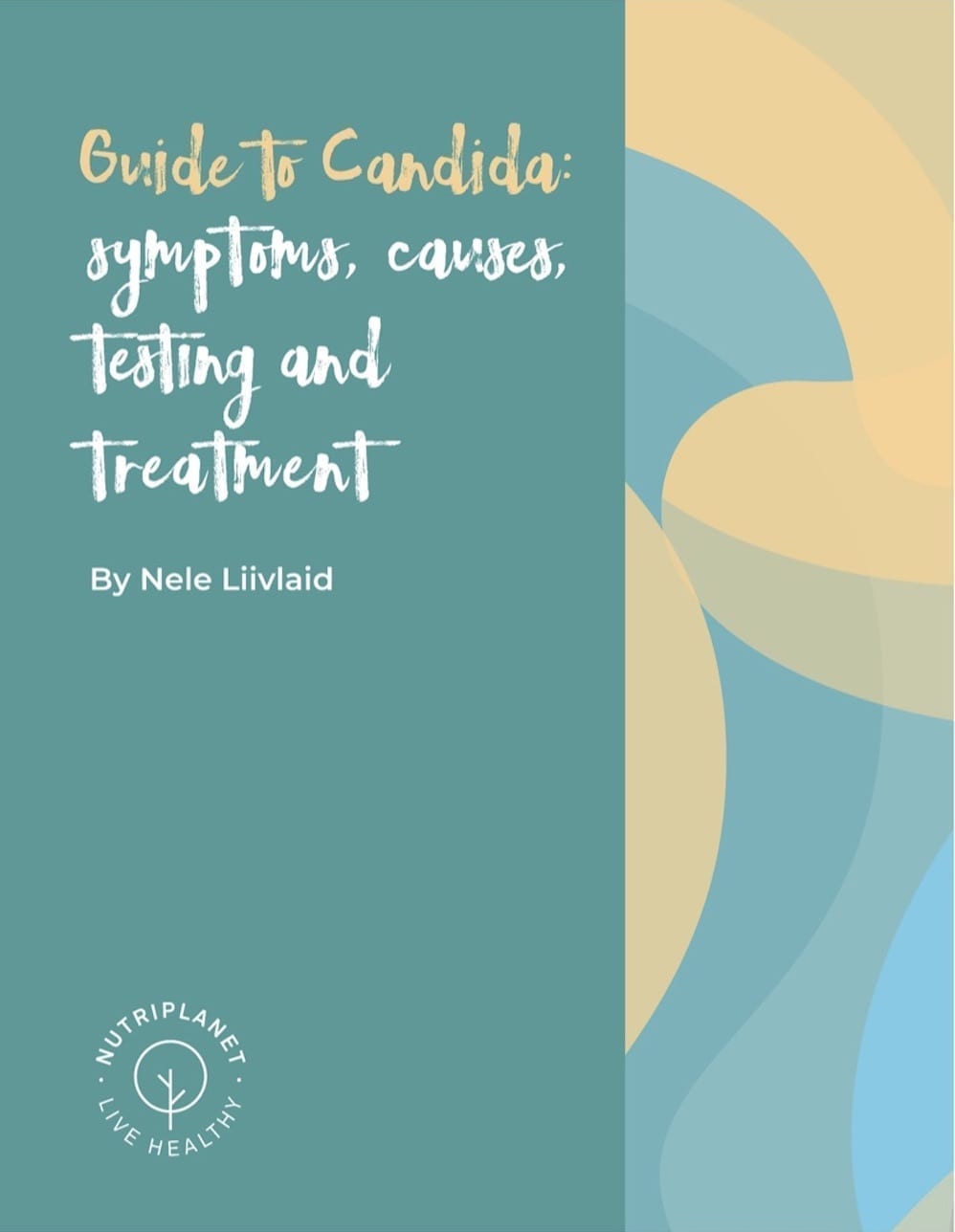
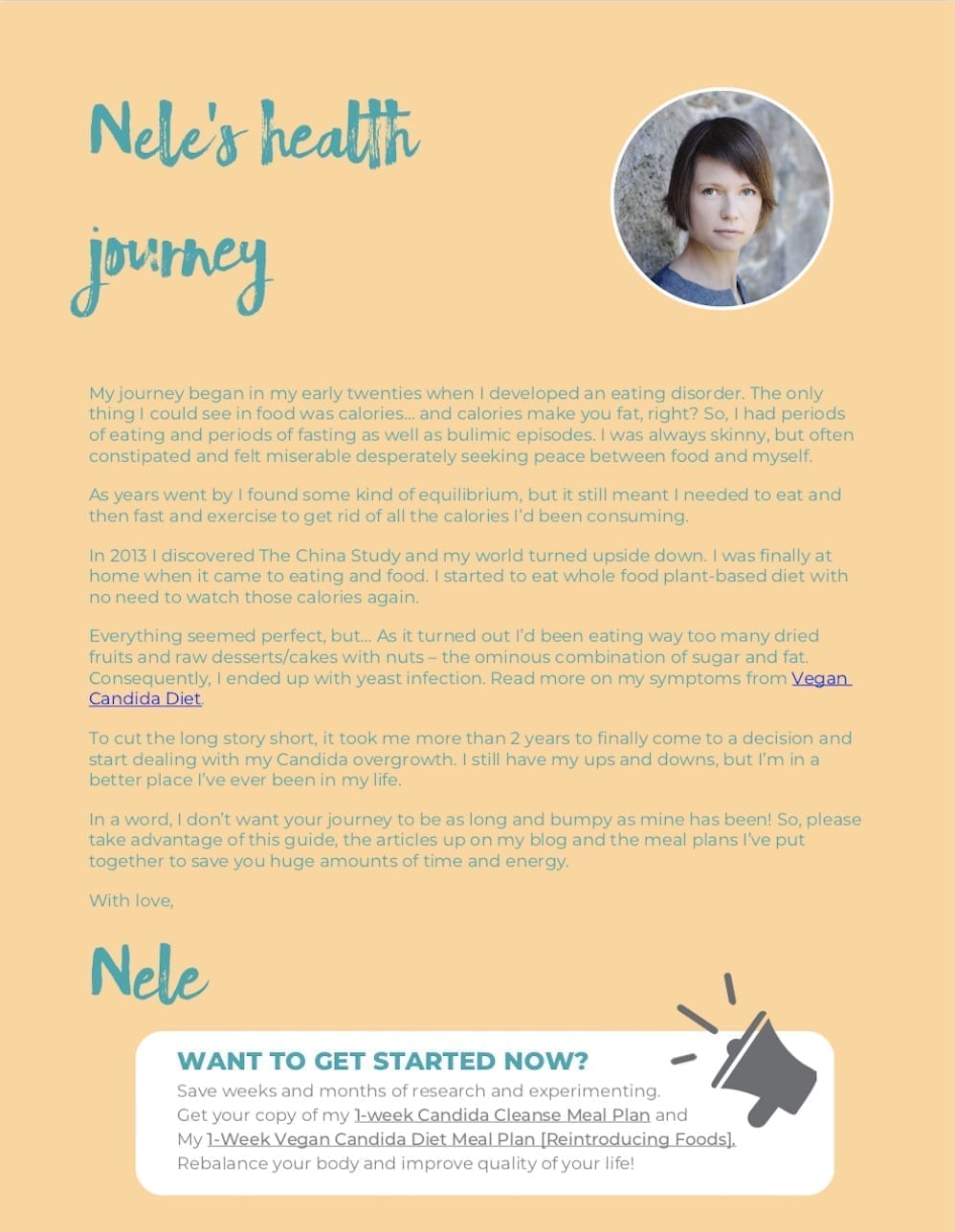
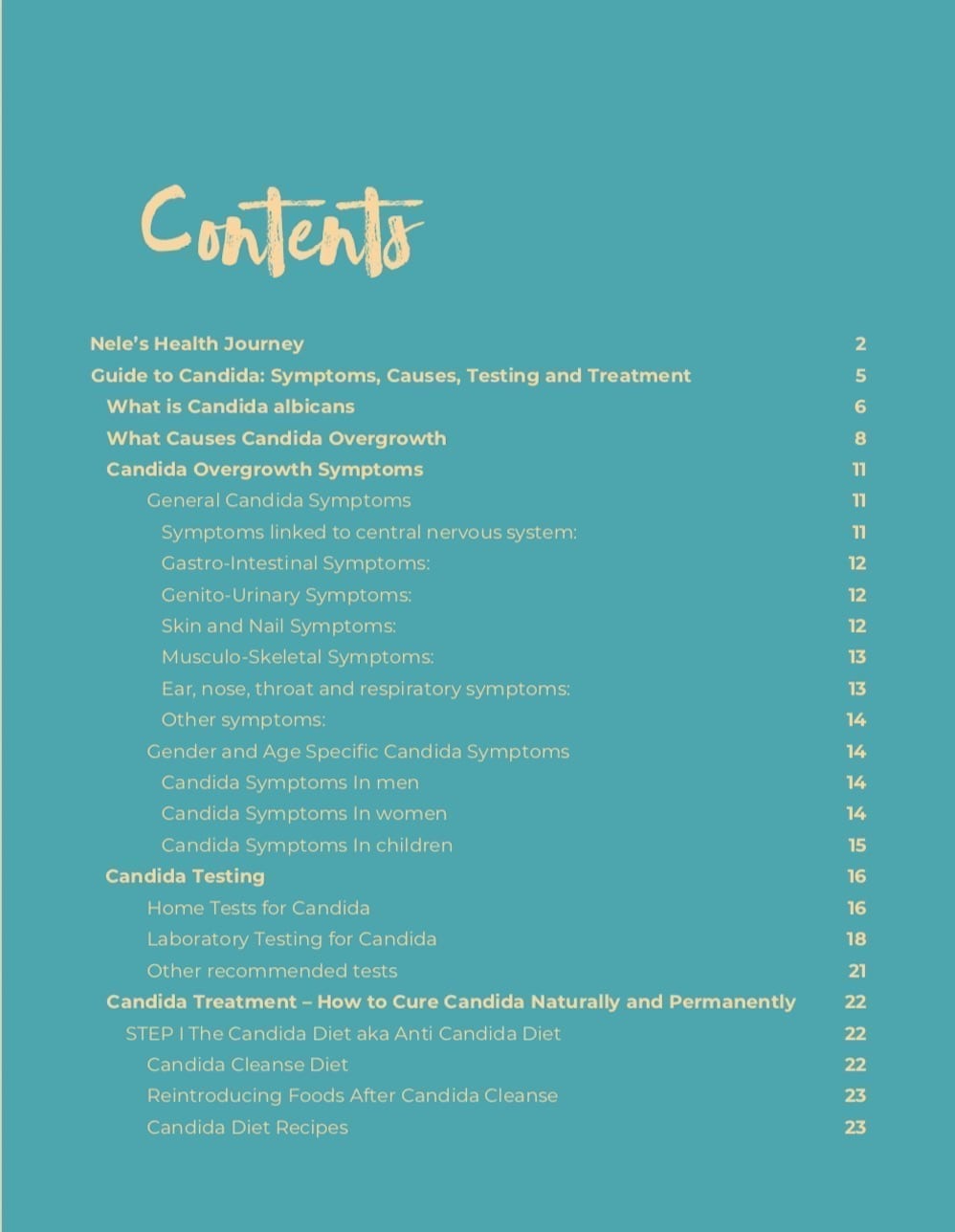
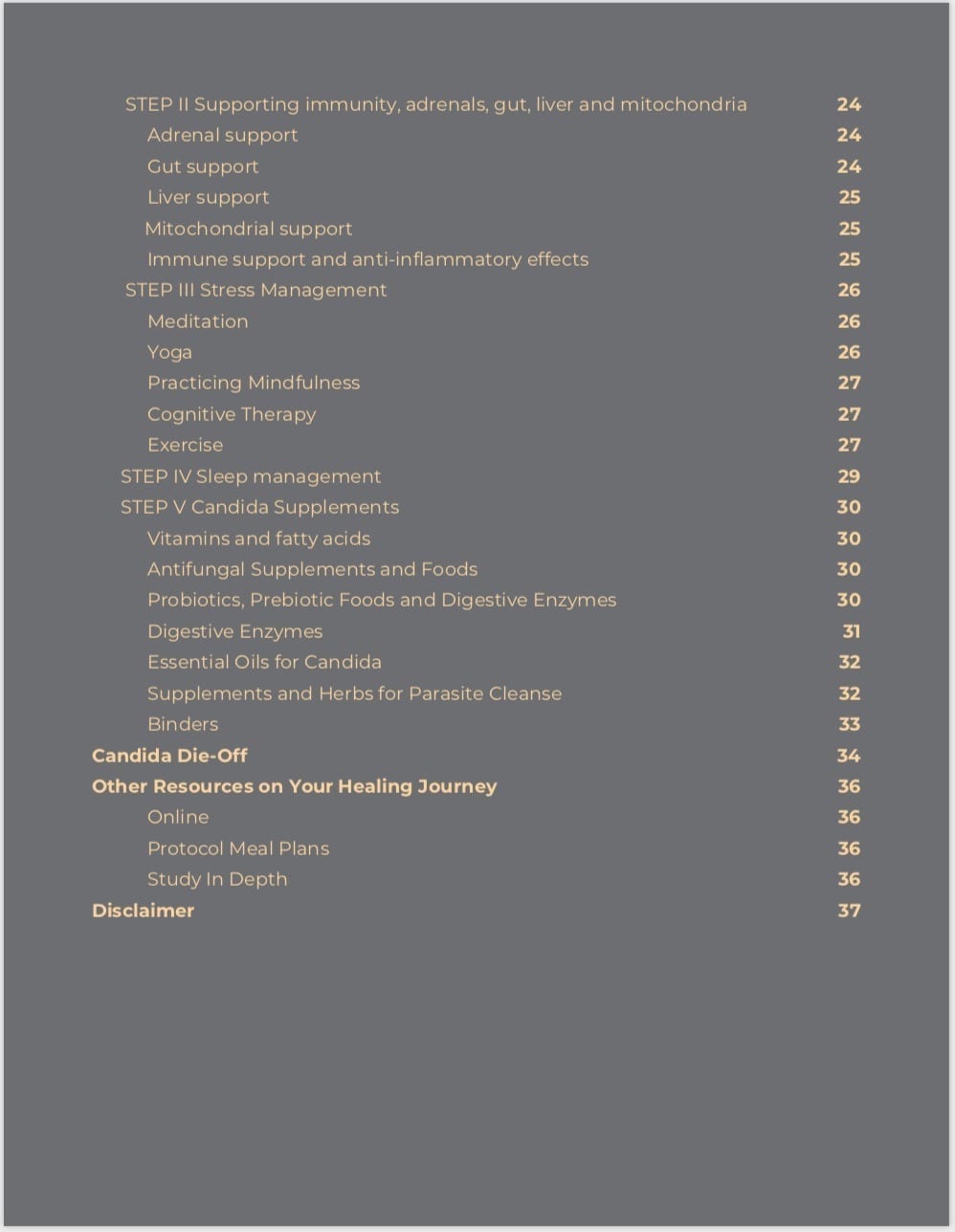
OBS: I found out I HAVE** haha sorry about that!! And one more question: how long did you have to stay on the diet and did you feel any better?
Hi there Rita!
I’m so glad you find the information helpful! Next week I plan to write a thorough blog post on how it went for me and what I’m eating now 🙂 Just a quickie though — I was on cleanse for about 2 months and then started to re-introduce foods gradually.
I will send you an email concerning the meal plans!
All the best!
Nele
Hi Nele,
I’m so glad I stumbled upon your blog while researching candida diets. I felt like I was alone in trying to do a vegan candida diet, but thank heavens for your more than thorough blog postings about the topic! It’s a tad overwhelming but I’m determined to do as much as I can this summer while I’ve got the time before school starts. I’m starting the cleanse tomorrow morning, and I would love to receive both meal plans for the cleanse and re-introduction.
I’m definitely going to tell some friends about your blog as they’re interested in this topic as well!
Many thanks and all the best,
Kim
Hi Kim!
I’m glad to hear that you have decided to take this step! It seems hard, but the results are really worth it!
Did you also read my latest posts about vegan Candida diet? https://www.nutriplanet.org/2017/07/living-candida-free/ AND https://www.nutriplanet.org/2017/07/vegan-candida-diet-experience-results/
I still need to update the meal planning post bearing in mind my latest knowledge. Anyhow, I will send you the info on both Candida plans on your email. Do you want me to use the same address I see with this post (the .edu one)?
All the best!
Nele
Hello. Really happy i found your blog. There are so little pages that have recipes that are suitable for candida diet. And I’m feeling overwhelemed with all this information….
I just started the diet a few day ago, but I’m wondering how do you know that it’s getting better? And how do you know you’re having a set back when introducing back food?
I also have issues with reflux and I don’t like to eat raw vegetables because it triggers it, but with this diet it is recommended you eat mostly raw. Will not eating raw set me back a lot?
Would also really appreciate if you could send me additional info about meal plan.
Hi Kaja!
Thank you, I’m glad 🙂
You know that you get better, when your symptoms start to disappear. And you get a set back when they emerge again.
I will send you an email about meal plans. Should I write in Estonian? 🙂
So my simpoms are low mood, yeast infections, brain fog and i feel like I’m tired all the time, and I have occasional digestive issues (I hope that is because of candida and not depression) 🙂 So I will see I’m getting better if these symptoms dissapear?
I have issues with figuring out what I should eat… I mostly eat raw or sauteed veggies now and I don’t think I even get 1000 calories per day because it’s too bland for me and I’m eating the same things all the time. I’m not good at making up my own meals, not good at experimenting in kitchen 🙂 I hope I won’t give up because of that…
I don’t speak estonian, so could you please send it in english 🙂
Thank you!
Sorry, your name is so Estonian 🙂 I will send you the email!
Hello, could you advise if Vegan BCAA and Melatonin are safe for a vegan candida diet? I have read that vegan bcaa supplements are derived from mainly corn, but can not find another way of getting them in my diet. Thank you
Hi there!
To be honest, I just searched online because I have no experience with those supplements. As much as I saw, some also contain citric acid, which you should avoid on Candida diet.
But my question is — why do you think you need to take them? Are you an athlete? Otherwise you can get all the amino acids from balanced diet. I only take B12 and vitamin D as supplement.
I wouldn’t be worried about the corn though, as you’d get a really-really small amount when taking the supplements.
All the best!
Hi Nele! Through lots and lots of research I’ve come to the conclusion that my “acne” is due to candida. Everything makes sense now that I know what the cause behind my symptoms are. I’m already taking multiple probiotics along with an herbal detox to flush my body of parasites and toxins. But I feel as though changing my diet for the time being would really boost the process. Unfortunately I’m very overwhelmed by the lack of foods I usually eat not being in this diet. I’m currently weight training and in a “bulk” to gain weight and a lot of the foods you can’t have (beans, potatoes, oats, etc.) are what I eat to gain and maintain my weight. I’m not looking to lose weight at all in fact I just got my period back from being underweight and in general I like my body better with a little extra fat. I really can’t afford to be losing anymore weight right now but this diet is literally just vegetables and very low calorie 🙁 I want to get rid of the candida but I’m not sure if this diet is for me, any tips?
Hi Leah!
Thanks for reaching out!
I understand you, but in order to get rid of Candida you need to make some sacrifices 🙂 You most probably won’t be doing any weight training in the beginning of your cleanse. I personally had die-off symptoms and felt quite weak and dizzy. However, this will pass and you’d regain your energy.
I will send you detailed information on my Vegan Candida Cleanse and Re-Introduction Meal Plans on your email, so you can see whether this would be of help to you!
I really hope you can become Candida-free as it’s so worth it!
Nele
Nele, could you send it to me as well? I’d be so grateful. I am struggling with PCOS and severe forehead acne and hair loss. I am vegan as well and tested positive for candida and heavy metals, etc. Many thanks!
Also, what vegan probiotic do you recommend?
I recommend:
Garden of Life Primal Defence Probiotic http://amzn.to/2t943MW (amazon.com), http://amzn.to/2u8JNzf (amazon.co.uk)
Hi Patricia!
Thanks for reaching out! I’m so glad you are ready to heal yourself 🙂 I will send you all the info on email.
P.S. I deleted your email address from your message, so that it’s not visible to everyone!